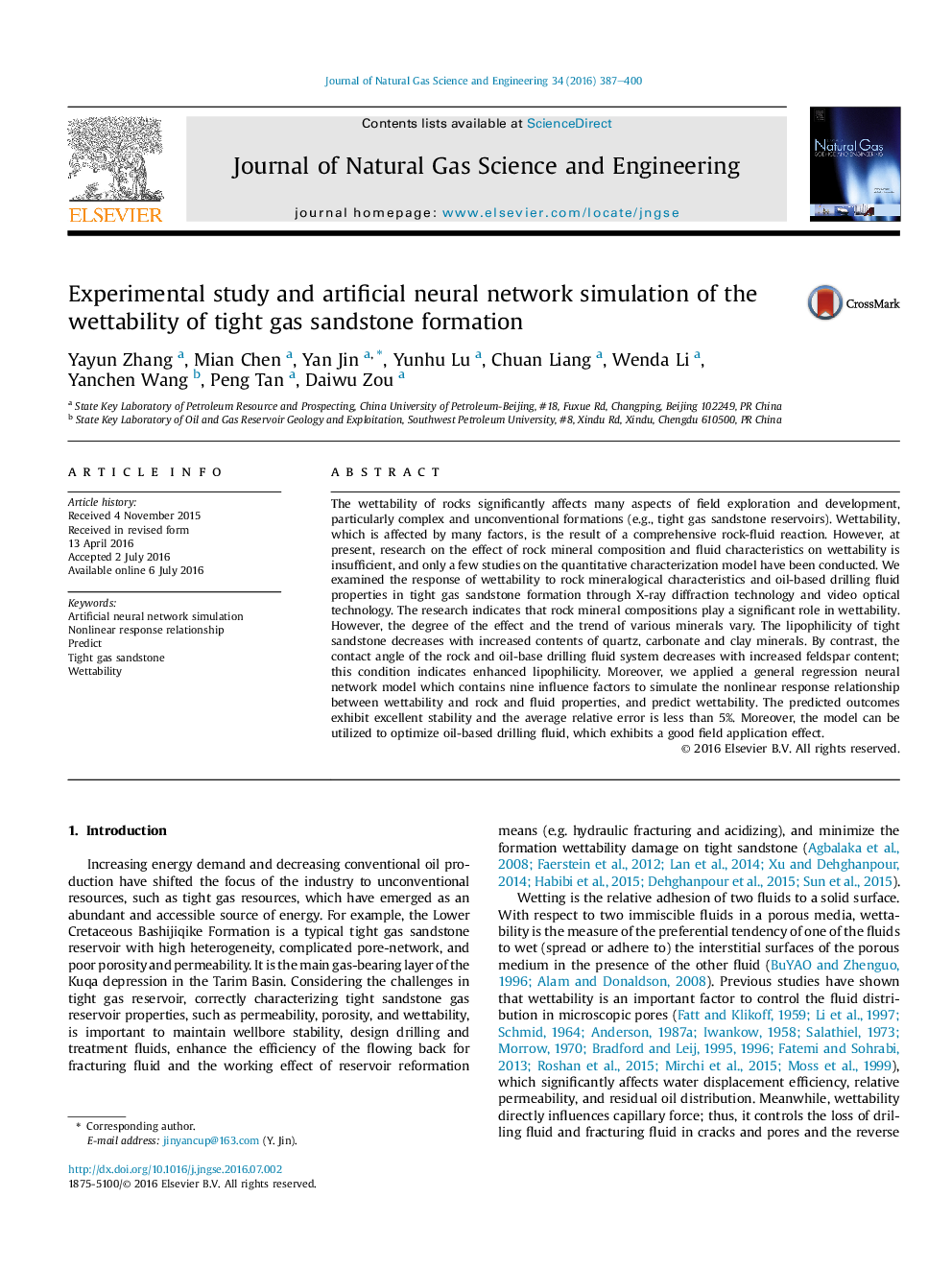| Article ID | Journal | Published Year | Pages | File Type |
|---|---|---|---|---|
| 8128652 | Journal of Natural Gas Science and Engineering | 2016 | 14 Pages |
Abstract
The wettability of rocks significantly affects many aspects of field exploration and development, particularly complex and unconventional formations (e.g., tight gas sandstone reservoirs). Wettability, which is affected by many factors, is the result of a comprehensive rock-fluid reaction. However, at present, research on the effect of rock mineral composition and fluid characteristics on wettability is insufficient, and only a few studies on the quantitative characterization model have been conducted. We examined the response of wettability to rock mineralogical characteristics and oil-based drilling fluid properties in tight gas sandstone formation through X-ray diffraction technology and video optical technology. The research indicates that rock mineral compositions play a significant role in wettability. However, the degree of the effect and the trend of various minerals vary. The lipophilicity of tight sandstone decreases with increased contents of quartz, carbonate and clay minerals. By contrast, the contact angle of the rock and oil-base drilling fluid system decreases with increased feldspar content; this condition indicates enhanced lipophilicity. Moreover, we applied a general regression neural network model which contains nine influence factors to simulate the nonlinear response relationship between wettability and rock and fluid properties, and predict wettability. The predicted outcomes exhibit excellent stability and the average relative error is less than 5%. Moreover, the model can be utilized to optimize oil-based drilling fluid, which exhibits a good field application effect.
Related Topics
Physical Sciences and Engineering
Earth and Planetary Sciences
Earth and Planetary Sciences (General)
Authors
Yayun Zhang, Mian Chen, Yan Jin, Yunhu Lu, Chuan Liang, Wenda Li, Yanchen Wang, Peng Tan, Daiwu Zou,
